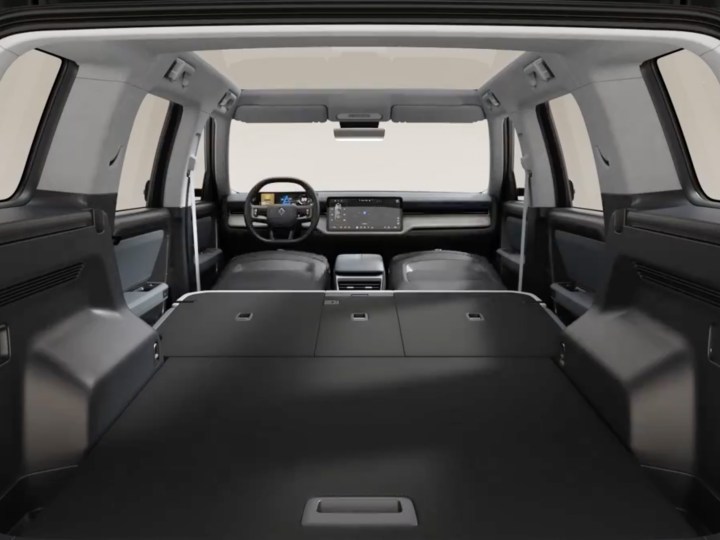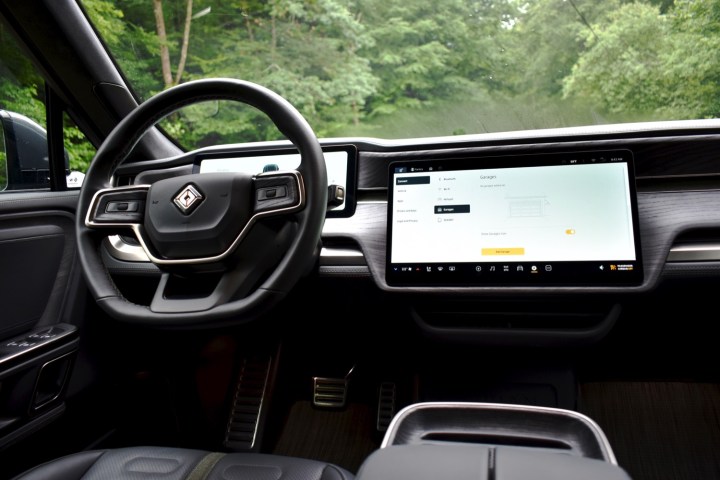Rivian has finally unveiled the R2, its long-awaited attempt at a more affordable electric SUV. The new vehicle may not be available just yet, but fans of Rivian’s design aesthetics and feature set are already looking forward to being able to order the new car. The R2 is targeted at being a more affordable take on the electric SUV and will sit alongside the flagship-tier R1S.
Let’s get this out of the way right now: The R1S is most likely going to be a better vehicle than the R2. Rivian isn’t replacing the R1S with the R2 — it’s releasing the R2 as a more affordable alternative, and there will be some compromises when buying the R2 over the R1S.
But what are those compromises? And just how does the R2 compare with the R1S? Here’s what we know.
Design
If you already like Rivian’s approach to car design in the R1S, you’ll like it in the R2 too. The R2 looks very much like the R1S, but a little smaller — at least from the outside. They both offer those now-iconic oval headlights, with a long light bar connecting them, and another long light bar at the back.

The biggest exterior design difference between these two vehicles comes down to size. The R1S measures 201 inches long, 82 inches wide, and 77 inches tall. The R2, on the other hand, is 185.6 inches long, 75 inches wide, and 66.9 inches tall — so it’s smaller in every dimension. That will come into play when it comes to interior space, which we’ll get into later.
There are some minor design changes to the exterior of the R2 versus the R1S — for example, the R2’s rear windows can be open, making for a more open-air driving experience.
Interior and tech
As mentioned, the dimensions of the vehicle will have a pretty significant impact on the interior space. While the R1S comes with three rows of seating, the R2 only has two, and there’s no option for a third. So, if you’re looking for a three-row SUV, at least when it comes to these two vehicles, the R1S is your only option — though if you’re looking for a slightly more affordable three-row electric SUV, it’s worth considering the Kia EV9.

There are other changes to the interior, too, though. Famously, the R1S doesn’t have a glove box, so there’s slightly limited front-row storage. The R2 remedies this, with not one, but two glove boxes. The R2 has another attractive feature — the ability for the second-row and first-row seats to fold down flat. Rivian says this allows for enough room to fit an air mattress, making for a pretty nice place to sleep when you’re camping.
As you might expect, many aspects of the interior of the cars are similar. Both have large infotainment displays with Rivian’s self-developed infotainment system, which does not support features like CarPlay or Android Auto.

It’s possible that the R2 will offer better self-driving then than the R1S, too. Rivian says that the R2 will offer 11 cameras and five radars dotted around its exterior, allowing it to drive itself on the highway without the driver having to keep their hands on the wheel, unlike the R1S, which currently requires drivers to to keep their full attention on the road. If we had to guess, we would assume that this autonomous tech will be rolled out to the R1S, too, perhaps even before the R2 is launched — but Rivian hasn’t made any announcements to that effect.
Performance
Because the Rivian R2 isn’t out yet, there’s a lot we don’t know about the performance of it. We do know that the R2 will be available in single-, dual-, and tri-motor variants — and Rivian has said that the tri-motor version of the car will be able to accelerate to 60 miles per hour in well under 3.0 seconds. That makes it pretty quick — though obviously, we’ll have to wait and see how much the tri-motor version of the car costs.

We do know much more about the performance of the Rivian R1s, at least when it comes to the current version of the car. And by the time the Rivian R2 rolls out, it’s entirely possible, and even likely, that the R1S will have improved specifications that could make it a more compelling option. The current version of the R1S is available in dual-motor or quad-motor variants, with a so-called “performance dual-motor” variant being available as an in-between option prioritizing off-road performance and improved range. The quad-motor version of the R1S offers a massive 835 horsepower and accelerates from 0 to 60 mph in “as quick as” 3.0 seconds. That’s very impressive, given the fact that the R1S is a very heavy vehicle. The slowest version of the car, which is the standard dual-motor variant, offers 533 horsepower and can accelerate from 0-60 miles per hour in 4.5 seconds.
Performance doesn’t just relate to how quickly a vehicle accelerates to 60 miles per hour. The Rivian R1S is likely to be more powerful vehicle than the R2, especially when it comes to the quad-motor variant — though that doesn’t necessarily mean that it’ll be quicker.
Range and charging
Rivian hasn’t given all the details about the range of the R2 just yet, but we do have some bits of information. Rivian says that the R2 will “offer” over 300 miles of range, which likely relates to the higher-range versions of the vehicle with the larger battery option. We also know that Rivian will offer two battery sizes. We’re hoping that even the lowest-range model of the R2 has a range of at least 270 miles or so — though we would have preferred all models have over 300 miles.

The R1S has a relatively wide variety of ranges. The lowest-range model is the dual-motor model with the Standard battery pack, which offers 270 miles of range. The highest-range model is the dual-motor model with the Max battery pack that offers around 400 miles of range. In between, there are a series of different options, though it’s important to note that not all drivetrains are available in all battery sizes. For example, you can’t buy the quad-motor variant with the Standard battery, which would have a range of much lower than 270 miles.
We’re expecting the two vehicles to charge at a similar rate. That’s to say, they should both charge at around 220 kilowatts, which allows the R1S to get from 10% to 80% in roughly 30 minutes. Frankly, it would be nice if Rivian worked on improving charging speed by the time the R2 rolls out, but there’s currently no word on whether or not that might happen.
Pricing and availability
The Rivian R1S is currently available, and you can order one right now — though you may have to wait a few months for delivery. The vehicle isn’t necessarily cheap — it starts at $74,900 for the dual-motor version of the car, with the Standard battery pack, and prices range up from there for larger batteries and more motors.

The Rivian R2, however, isn’t available just yet. Rivian has announced the vehicle, and it’s taking reservations — however, those reservations involve little more than a refundable $100 deposit that gives you a place in line. Rivian says that deliveries of the R2 will begin in the first half of 2026, so you’ll have to wait a little while to get your hands on one for yourself. The real advantage to the R2, however, comes in the form of its price. Rivian says that the R2 will start at $45,000, which is much lower than the starting price of the R1S.
If you want a Rivian SUV right now, your only option is the R1S.
Conclusions
The Rivian R1S is one of the most-loved EVs out there right now, and if the R2 is anything like it, it’ll be a hit. As mentioned, if you’re in the market for an electric car right now and want a Rivian SUV, your only real option is the Rivian R1S. Even when the R2 rolls out, the R1S will be a better vehicle. But, it’ll be a lot more expensive, too — and those who want a reasonably high-end Rivian SUV at a more reasonable price will want to consider the R2 despite its smaller size and lower performance.
Editors’ Recommendations
Services Marketplace – Listings, Bookings & Reviews